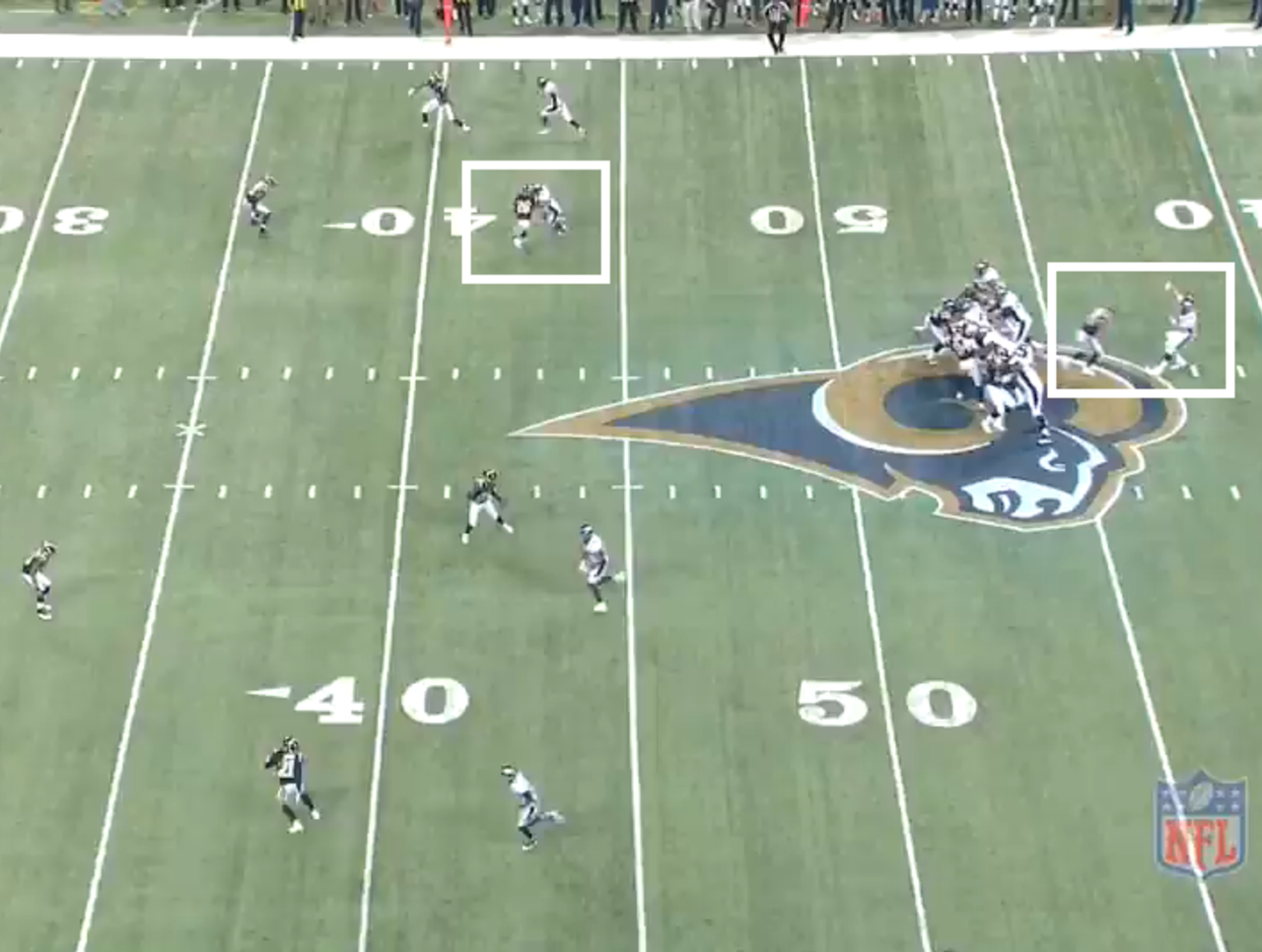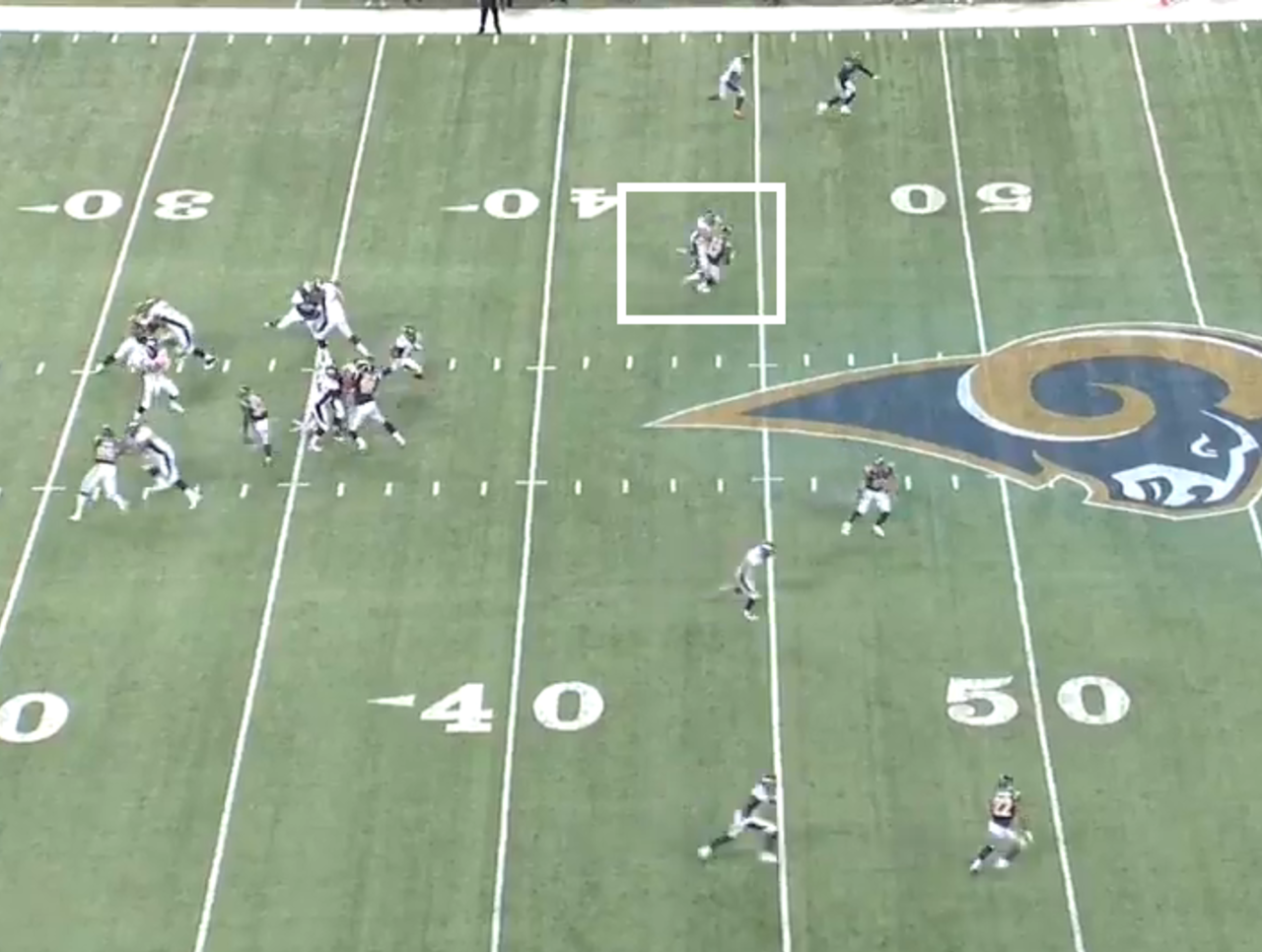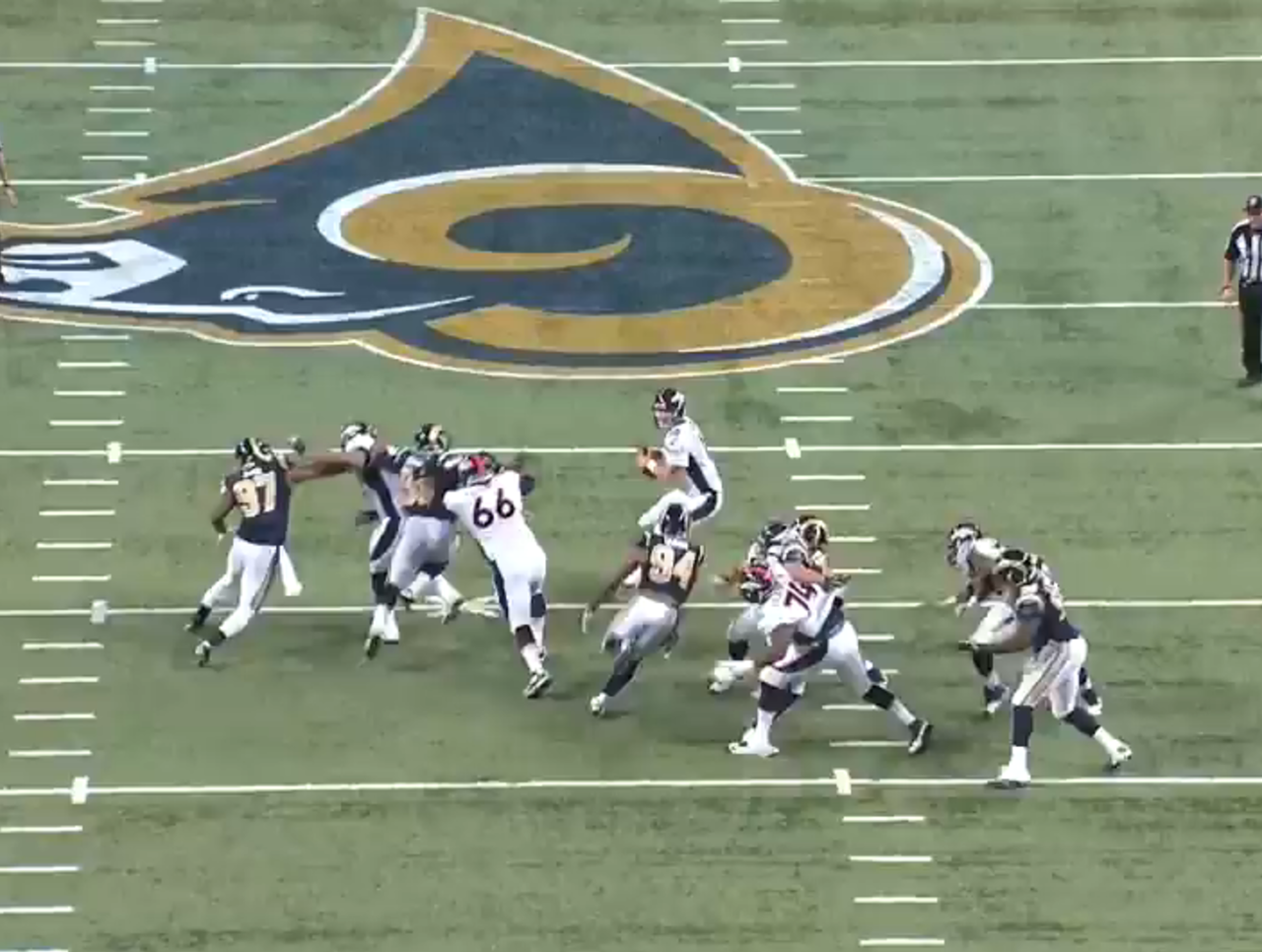Film Room: How the Rams flustered Peyton Manning in upset win
Peyton Manning’s downfall was his poor pocket movement in the Broncos' Week 11 loss to the St. Louis Rams.
The Rams stifled Manning by attacking him where he’s most comfortable, eliminating his strength and forcing him to work off his weaknesses. It was the same game plan the Seattle Seahawks used in Super Bowl 48, and the New England Patriots in their 43-21 drubbing in Week 9.
The Rams' stunts and blitzes came through the middle of the offensive line and into the heart of the pocket. This forced Manning to reset his feet or throw on the move. When he ignored the blitzes and tried to beat them with quick throws, he made mistakes.
On third-and-10 in the second quarter, the 38-year-old took a three-step drop and looked to his right at a flexed tight end. The tight end ran downfield in between the numbers and hashes, covered by a dime cornerback, who shuffled to a curl-flat zone and funneled him to the deep safety. It was four under, two deep coverage behind what coaches call a five-man “fire zone” blitz.
The blitz was designed for linebacker James Laurinaitis to snake through the A-gap in between the center and right guard and hurry Manning. When Manning hit his third step, Laurinaitis was in his face with his hands in the air and his right shoulder ready to spear through the veteran quarterback. Manning didn't set his feet. He leaned back, twisted his knees and chucked the ball with the power of just his arm.

The ball looked like it was deflating as it sailed and wobbled well behind and wide left of the tight end. If it didn't slip through the diving arms of a safety, it would have been intercepted.
With his mouth open in that trademark Manning-family way, he looked back at his teammates as he walked to the sideline. It was only the first half, and Manning was flustered. This was a problem. If he didn’t have enough time to throw from the pocket and didn’t find a rhythm with every throw early on, he'd have trouble finding it later. Flustering him affected his recognition of defenses, too, because he would start worrying when and where the blitz was coming from. He rushed throws. He made the same mistakes, and he rarely did that. But on Sunday, at the start of the fourth quarter and facing second-and-long, it happened.
From shotgun, Manning faked a handoff to a running back and hopped forward as he looked to a tight end running outside the left hash. Until the snap, linebacker Alec Ogletree showed blitz. When the snap came, he dropped into coverage and tailed the tight end. On the other side of the field a nickel cornerback blitzed from Manning’s blind side, between the right tackle and right guard, and harrowed into the pocket.

Manning ignored the cornerback and hurried a throw to the tight end, who Ogletree blanketed. He tried to squeeze a throw to the back shoulder, but it wobbled low near the tight end’s hip, where Ogletree had his arms extended to swallow the ball for the Rams’ first interception.
Manning walked off the field and to the Broncos sideline frustrated. His chinstrap still intact, he looked up at the scoreboard and then stared at the sideline. He prided himself in avoiding mistakes, yet here he was making one after another. This mistake happened against a blitz concept he'd seen hundreds of times in his career. Even worse, he saw it a quarter earlier.
As the game wore down to its final minutes, the Broncos’ hopes of winning rested squarely on Manning's shoulders. The bleak reality was he wasn’t going to lead them to a comeback win like he had so many times before. Whenever he made a first-down throw, the Rams fired back with a hard shot on him and his receivers.
With less than 10 minutes left in the fourth quarter, Manning hit his breaking point. It was fourth-and-4, and he took another quick three-step drop. The Rams brought heat with Laurinaitis in the A-gap between the center and left guard. Laurinaitis shot through and the defensive tackle next to him rushed wide. That caused the center, guard and left tackle to slide over in the same direction.

While all three focused on Laurinaitis and the defensive tackle, they left the end unblocked and free to loop behind his two teammates and into the far-side A-gap between the center and right guard. He stared down Manning, who lowered the ball to his chest, then his waist and held it with both hands. The end wrapped his right arm around Manning’s waist and spun him around. For a second it looking like he would magically escape, but a defensive tackle came in and slammed him down, stalling yet another drive.
It was one of 13 dropbacks Manning was pressured on, and the second resulting in a sack. He completed 45 percent of his passes on those dropbacks, per Pro Football Focus, and threw two interceptions. Overall, it was his lowest quarterback rating (75.3) of the season. His lack of pocket movement was problematic, and the Rams, like other defenses before them, took advantage of it to shut him and the Broncos' potent offense down.